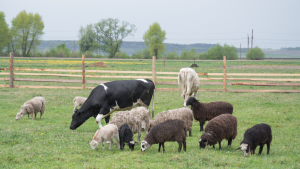
Beef values have fallen on average 6.5%, losing most of the gains in value from last year. The 2023-24 season was a difficult one with weak demand from China and Australian meat flooding the market. Prices for beef have held up well due to drought in North America and relatively strong European and North American markets.
Prolonged drought in Australia will continue to see record levels of exports flooding some markets, putting downward pressure on beef values.
Drought in parts of New Zealand put pressure on meat works to process stock, however most farmers were well placed due to good stock weights coming into calving.
There has been a wind back of some unpopular regulation. Uncertainty remains as to what regulation will come in its place.
Sheep values fell substantially due to low lamb and mutton prices. Demand from China slowed, whilst at the same time more lambs were born in spring, increasing the number of prime and store lambs for sale, leading to lower values.
Sheep meat values are now well below the 5-year average, many sheep farmers having their worst season in decades due to low commodity prices, drought, high interest rates and stubbornly high on-farm inflation, even with aggressive cost cutting.
Wool markets remain uncertain, forecast prices closely matching this season. Increased shearing costs continue to make wool uneconomic except at the fine end of the market. For many sheep farmers, shearing costs now exceed returns from wool. This has seen an increase in self-shedding breeds being incorporated into flocks as farmers look to reduce shearing costs.
When we’re looking at your financial statements for 2024, let’s also discuss your livestock valuation choices.


